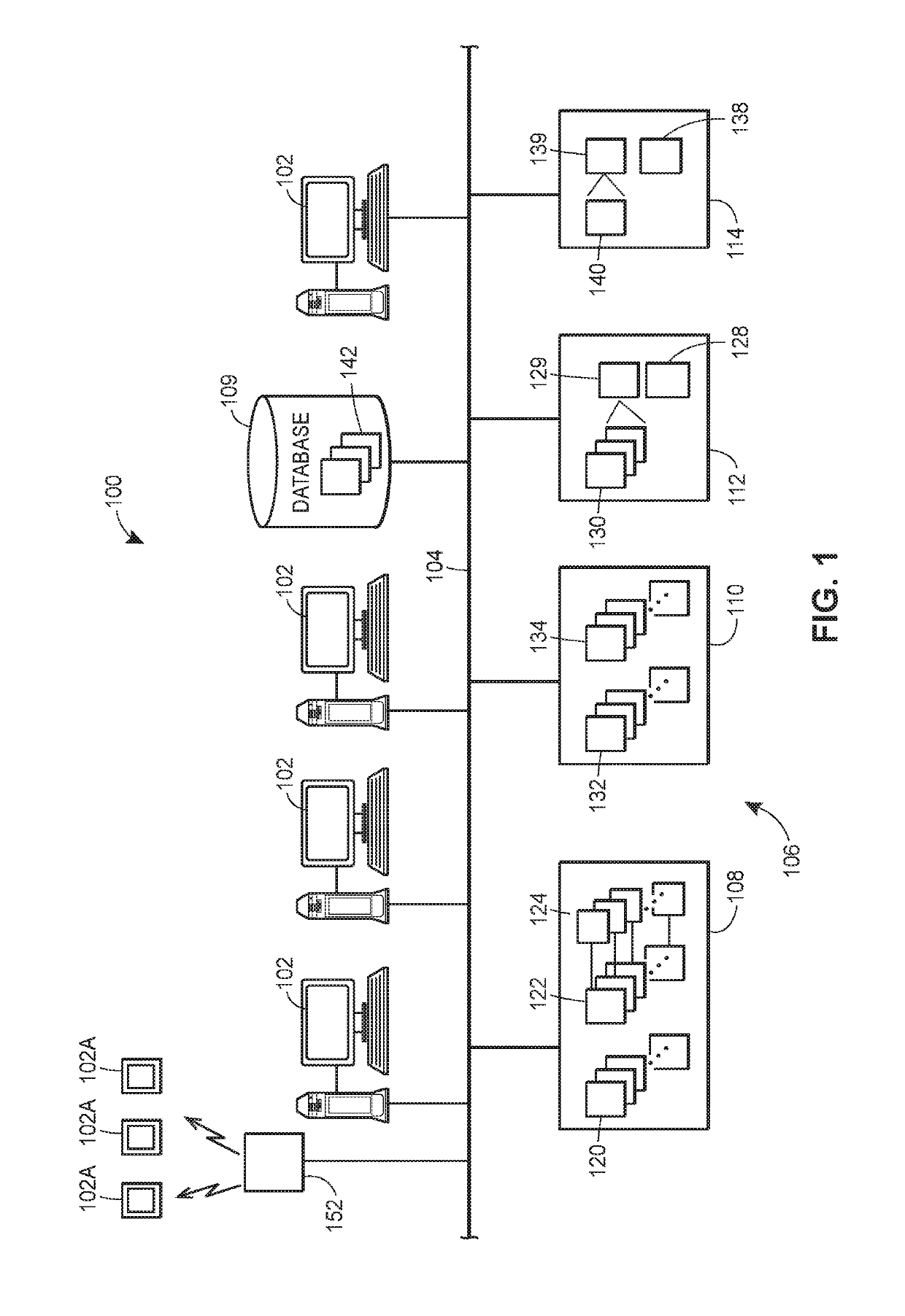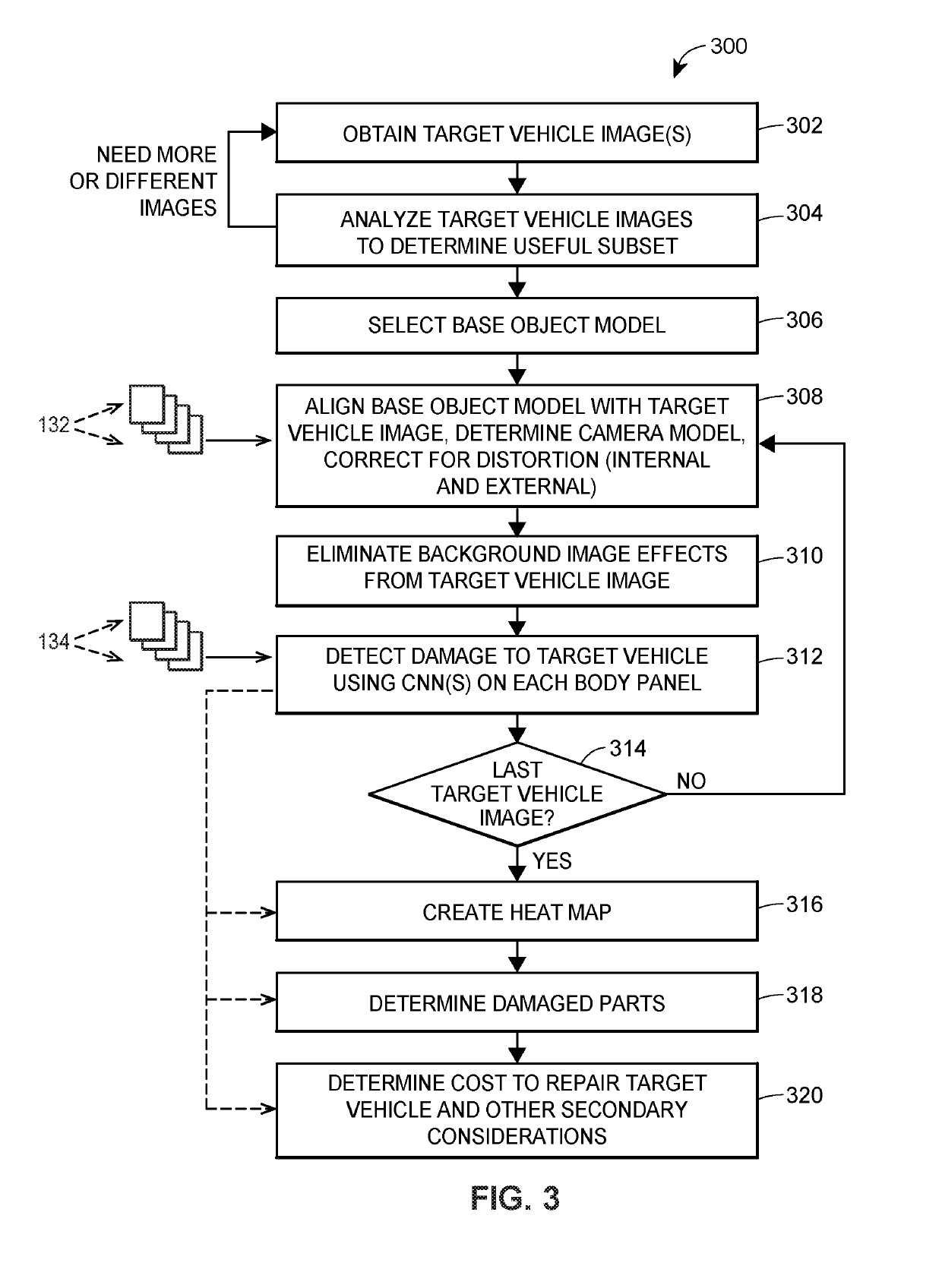Technology for capturing, transmitting, and analyzing images of objects
a technology of object images and processing systems, applied in the field of image processing systems and techniques, can solve the problems of inability to quickly and effectively detect, isolate, or quantify damage that may have occurred to an automobile, changes to buildings or other, and no known image processing systems that can quickly and effectively d
- Summary
- Abstract
- Description
- Claims
- Application Information
AI Technical Summary
Benefits of technology
Problems solved by technology
Method used
Image
Examples
Embodiment Construction
[0025]FIG. 1 illustrates one example of an image processing system 100 which may be used to determine changes to a target object, automatically or semi-automatically, generally by determining differences between one or more images of the target object as changed and one or more images generated from a base model of the object representing the object prior to the changes occurring to the object. After changes to the target object have been determined and quantified in some manner, further processing systems, which may be incorporated into the image processing system 100, may be used to determine secondary characteristics or features associated with the target object, such as the amount of change or damage to the target object (assuming that the changes to the object represent damage), costs associated with repairing or replacing the target object, the time it may take to repair the target object, the progress the target object has undergone in changing states, etc.
[0026]As illustrate...
PUM
 Login to View More
Login to View More Abstract
Description
Claims
Application Information
 Login to View More
Login to View More - R&D
- Intellectual Property
- Life Sciences
- Materials
- Tech Scout
- Unparalleled Data Quality
- Higher Quality Content
- 60% Fewer Hallucinations
Browse by: Latest US Patents, China's latest patents, Technical Efficacy Thesaurus, Application Domain, Technology Topic, Popular Technical Reports.
© 2025 PatSnap. All rights reserved.Legal|Privacy policy|Modern Slavery Act Transparency Statement|Sitemap|About US| Contact US: help@patsnap.com



